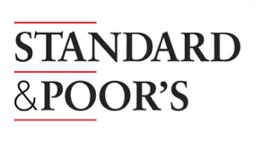David Tesher, an S&P managing director in charge of one of the firm's two collateralized-debt-obligation groups, let analysts who reported to him put the highest possible ratings on deals S&P "knew did not accurately reflect the true credit risks," the U.S. government alleged in the suit filed Feb. 4.
When a different group of analysts warned that more and more borrowers were falling behind on their payments, Mr. Tesher didn't tell his analysts, federal prosecutors claim. They put his name in the 128-page lawsuit a total of 59 times.
Mr. Tesher, who couldn't be reached for comment, now is a managing director in the part of S&P that analyzes the ability of companies to repay their debts.
The Justice Department identified five S&P executives, including Mr. Tesher, in the lawsuit, as it seeks to make S&P, a unit of McGraw-Hill Cos. pay more than $5 billion for giving its seal of approval from 2004 to 2007 on deals that caused steep losses at federally insured banks and credit unions that bought securities rated by the firm.
The suit also refers to 17 unnamed employees, ranging from "Senior Executive A" to "Analyst F." There also are several people referred to simply as "analysts." One of them, Shannon Mooney, wrote in a 2007 instant message to another analyst that a CDO "could be structured by cows and we would rate it."
The "cows" message appears in both the lawsuit and in a 2011 Senate report about the financial crisis in which Senate investigators identify Ms. Mooney as the sender.
Ms. Mooney now rates different kinds of structured-finance deals, and her name appears on recent S&P research reports. She couldn't be reached for comment.
An S&P spokesman wouldn't confirm or deny specifics, saying the firm doesn't publicly discuss personnel matters.
The spokesman reiterated S&P's previous denial of the government's allegations. S&P has said prosecutors "cherry picked" emails and other documents, while ignoring millions of records that counter the accusations.
Thomas Gillis oversaw research and rating standards at S&P and now is head of quality control for ratings on residential mortgage-backed securities. Mr. Gillis's last name appears 50 times in the civil suit, which details his correspondence and interaction with other S&P executives that helped to shape the firm's rating decisions. He couldn't be reached for comment.
Of the more than 25 employees included in the U.S.'s lawsuit, at least 10 remain at S&P, though their duties have changed since the financial crisis.
The Wall Street Journal determined their identities and job status by reviewing S&P research reports, court filings and the Senate report, and through interviews with former and current employees.
No individuals have been named as defendants by federal prosecutors or 16 state attorneys general who have filed suits against S&P. In other crisis-related lawsuits, regulators seldom have brought charges against executives or other employees at companies accused of wrongdoing.
S&P says it has spent about $400 million since 2007 to strengthen compliance, train analysts and revamp its rating standards. Those moves have made it harder for bond issuers to get triple-A ratings from S&P, the spokesman added.
"We have taken to heart the lessons learned from the financial crisis and made extensive changes that reinforce the integrity, independence and performance of our ratings," S&P President Doug Peterson told analysts and investors earlier this month. He took over as S&P's top executive in September 2011.
But some regulators who also have alleged misconduct by S&P before and during the crisis say it is discouraging that more than one-third of the employees referred to in the U.S. government's suit remain at the firm.
"We suspect that operational issues persist" at the firm broadly, said a spokeswoman for Illinois Attorney General Lisa Madigan, who sued S&P last year for allegedly misrepresenting its ratings as independent. S&P has denied any wrongdoing and is fighting Ms. Madigan in court.
A Justice Department spokeswoman and the Illinois spokeswoman declined to comment on why prosecutors aren't pursuing current or former S&P employees. The Justice Department wouldn't say why it identified some S&P officials in its suit but not others.
About 15 S&P employees identified or referred to in the U.S. government's suit no longer work there. Patrice Jordan, who was identified in the U.S. government's suit and who supervised employees responsible for rating most new CDOs from 2005 to 2007, left S&P in 2008. She now works at the Federal Deposit Insurance Corp. She didn't respond to messages.
The same report and a civil lawsuit filed in federal district court in New York against S&P and rival Moody's Investors Service by Abu Dhabi Commercial Bank refer to Ernestine Warner, an S&P official in charge of monitoring the ratings of residential mortgage-backed securities, or RMBS, after they were sold. The suit claims that investors lost money because of the rating firms' allegedly inflated ratings. S&P and Moody's executives have denied wrongdoing.
U.S. prosecutors called Ms. Warner "Executive F" and alleged that she "regularly expressed frustration to her colleagues that...she was prevented" by Mr. Gillis and other S&P executives "from downgrading the ratings of subprime RMBS because of concern that S&P's ratings business would be affected."
According to S&P research reports, Ms. Warner works in the rating firm's investor-relations department. It communicates with buyers of deals rated by S&P. She declined to comment.













 As ammunition against Standard & Poor's Ratings Services, the Justice Department packed its fraud lawsuit with vivid details about more than 25 employees who allegedly put triple-A ratings on shaky bundles of subprime mortgages-or dithered on downgrading the securities as the housing market was collapsing.
As ammunition against Standard & Poor's Ratings Services, the Justice Department packed its fraud lawsuit with vivid details about more than 25 employees who allegedly put triple-A ratings on shaky bundles of subprime mortgages-or dithered on downgrading the securities as the housing market was collapsing.